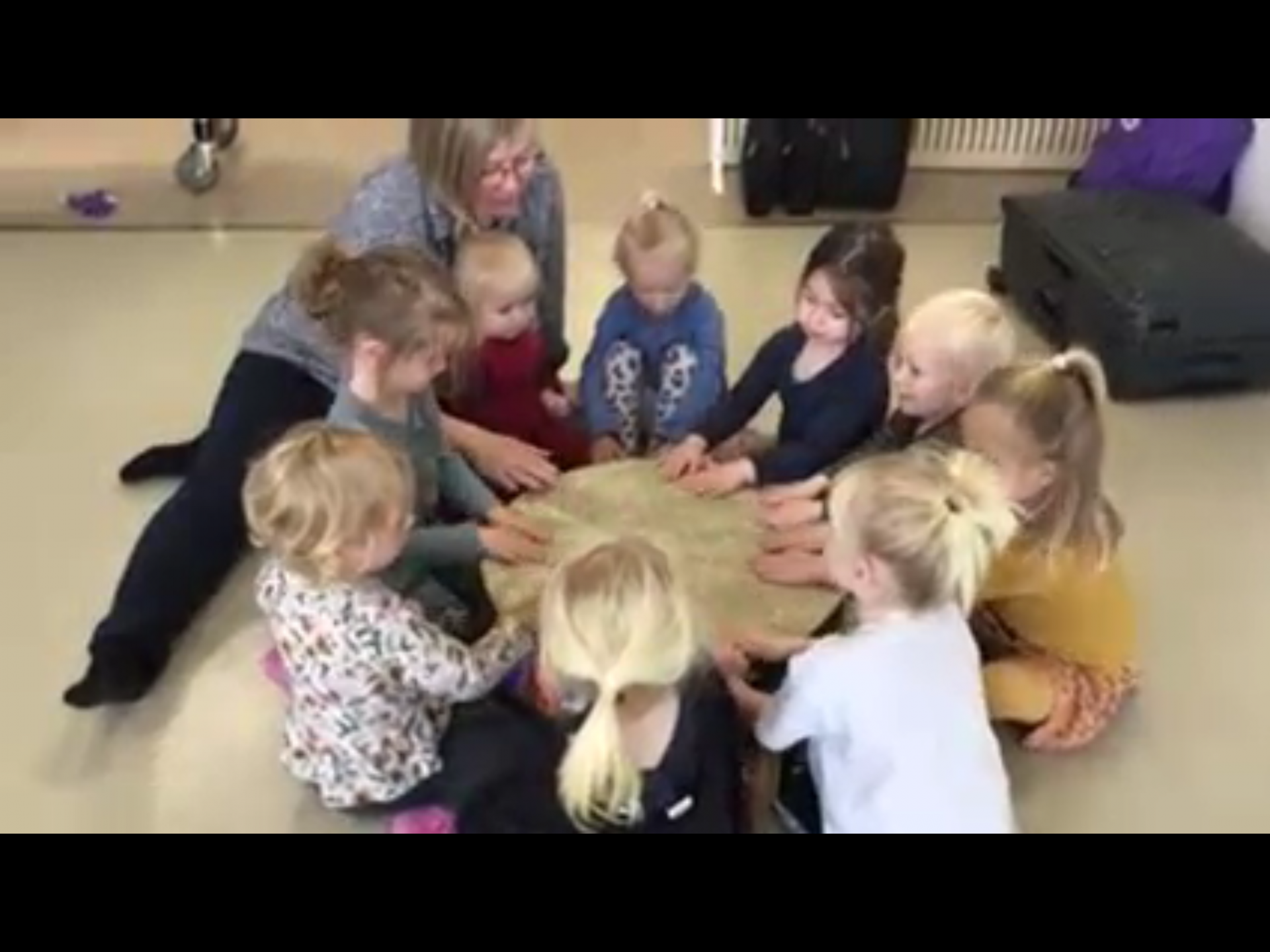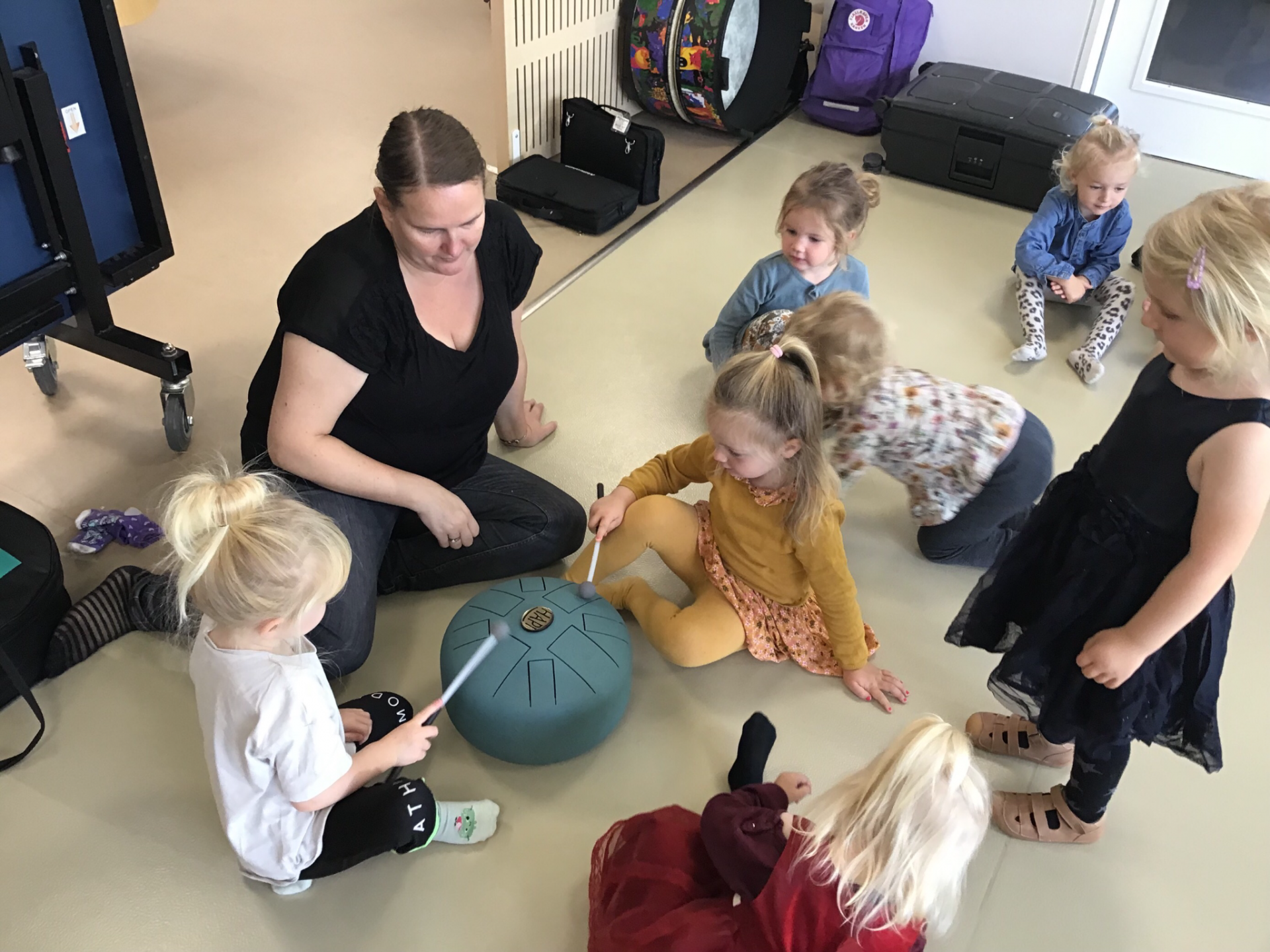MUSIC, COMMUNITY, CO-CREATION, EDUCATION, PLAY
Region: North
Municipality: Hjørring
By: Hjørring
Year: 2021
Artist: Signe Højmark
DAILY OFFER: Children and Youth Centre Lundergård
When the Children's Youth Centre Lundergård started, it was with this SNIP change:
How can we create transitions from nursery to kindergarten and how can we strengthen the bridge between nursery and kindergarten?
Participants in LegeKunst have been the oldest nursery children and the youngest kindergarten children + regular adults who participated, as well as the musician Signe Højmark who was associated with our Legekunst course.
—————————————————————————————————————-
The pedagogical environment has changed in a greater focus on how we can make transitions in the children's everyday life good and safe.
There can be many transitions for children during a day in the institution. For example, when kindergarten children come in from the playground to eat lunch, when nursery children have to be put down, and in many other situations. Transitions can be difficult for many children, and here we see nursery children crying at everyday transitions. Signe Højmark visits both the nursery and the kindergarten after the LegeKunst course to help with transitions in the form of frame songs or music, and in this way many of the children and the adults get a little bit of LegeKunst. We have been inspired to use frame songs or music more often in everyday life. More singing and music has been introduced into everyday learning environments, and one educator says: "The children just go and sing, hum all day long. We have a big assembly in the nursery 3 times a week, where we repeat "the ones we know" and practice new songs"
The children are engaged in repeating the songs and playing the instruments (e.g. big drum, flyswatter, rattle eggs), especially the Hapi Drum gives the children a peace with its magical sound and is a unique gathering point. At first it was difficult for some children, but gradually everyone is comfortable and clearly expectant when the children come to LegeKunst on Fridays, as it has become familiar to them with the songs, the music and the regular adults who participate in the programme.
Bridging the gap between nursery and kindergarten has been strengthened by the future kindergarten child having shared experiences with the youngest kindergarten children and the regular adults, and they have music and song as a common ground.
We see that bridge building is successful when the nursery children stay in the kindergarten in the morning and play, when the door is otherwise closed between the two departments.
We have used songs that the children sang in everyday life, songs and games they already knew, and also challenged the children a little with new, which the children have quickly taken.
We find that the children themselves offer some songs during the process, and we are very careful to choose something where the children have the opportunity to offer, eg. "Apple man, come inside" and the song about farm animals. We make sure the children have something visual to go with the songs to support the words, e.g. a sheep, a strawberry, a crocodile.
We have followed the children's tracks and strengthened their democratic education, they have had a say in the choice of songs: including the fly swatter song which was unmissable.
The action learning method is not new to us, and action learning is very useful in collaborating with each other, including being curious, wondering and reflecting on your own practice, and also being very explorative of the process along the way and drawing new lessons in collaboration with your colleagues.
Throughout the process, from the Joint Kick off to now, the co-creation with Signe Højmark has been characterised by positivity, joy, seeing the possibilities in the process and respect for each other's work. The collaboration has been characterised by daring, being curious about each other's practice, being responsive to each other, and being in the process. Signe Højmark has been very good at starting things up, giving input and ideas, and getting the staff involved and contributing to the collaboration.
During the collaboration, Signe Højmark will record videos of the songs that both parents and staff can use, as well as transitional music that the rest of the institution can use in everyday life.
The entire staff group has tried a small session with Signe Højmark, so we have all experienced what LegeKunst can also do.
Some of the elements we use in practice from the meeting with Signe Højmark are for example the songs, use of drums and wind games as a way to get the children down in arousal. And there is a focus on creating structure and time for repetition in what we do, as well as prioritising planning so that agreements are put in place and we all know who is doing what.
Another example from practice that LegeKunst has brought is the use of wind chimes in transition situations, at hand washing, for eating and the like.
We imagine that the sound of the bells represents recognisability and predictability for the children.
The pedagogical staff does not speak differently about play, education, art and culture, as these words are already in focus in our everyday life. Education is, for example. one of our 5 values in Børne og Ungehuset Lundergård, and we have for a long time had a special focus on play, for example through professional lighthouses. The concepts of art and culture are a natural part of our institution, e.g. we have participated in Sistema for a number of years, the opportunity to do yoga, theatre subscription and the like. Børne og Ungehuset Lundergård is a multi-ethnic institution and this gives us many opportunities to get to know many different cultures.
The regular adults participating in the PlayArt programme are particularly concerned with their reflections as they go through the PlayArt programme. and the good stories are often passed on to the rest of the colleagues.
One experience we've had is that the adult's delivery of the material is essential - the children are involved and happy if the adult is involved. We are role models for the children and they see themselves reflected in the other children and very much in us.
This is evident in the children if they have practiced the songs in the living room in the week leading up to LegeKunst. It also gives the children an opportunity to be more involved when they know it beforehand - the importance of having a prior understanding.
We have been confirmed again that repetition is good for the children.
We have found that music can be used as a great tool for transitional activities, such as gathering, sleeping and as an activity at the end of the day.
Experience shows us the importance of a safe and good bridge building, and here it can be an advantage that we together have a common third, as in LegeKunst (music and song)
We have learned that an artist as a tool in bridging different groups can do something unique.
We have set up a bridging committee which is working on good "rules" for bridging here.
We will definitely continue our PlayArt Fridays, and use them as a pedagogical tool.
We have created a sense of community, we want each other, both children and adults.
We show the children that we are good role models when they see the adult in action
We can see small signs and feel the impact of the bridge building. We have seen nursery children making the transition to kindergarten in a more confident way.
What are we still curious about
The use of music, for example, as a way of building bridges.
How do we develop as staff in this?
Should there be a flow of staff in attendance of our Friday Music Bridges, which we will of course continue.
click on the picture to see a larger version



